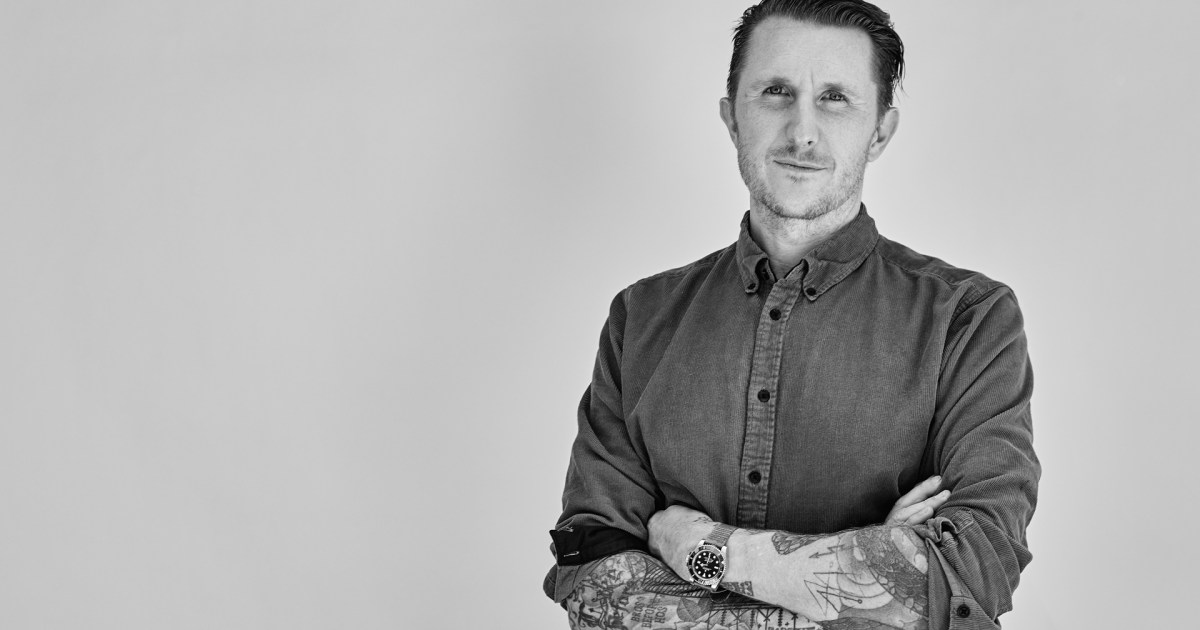Tattoos move into the Digital Marketplace
It was one of those rooms where I kind of understood that if I said butterfly I was probably getting beat up, so I was like, “All right, I’ll pick a skull.” So he tattooed this little skull on my leg, and I was thrilled.

Capital Thinking · Issue #972 · View online
While referring to Scott Campbell as simply a “tattoo artist” would be bordering on the reductive — he works in a variety of media, has collaborated with the likes of Louis Vuitton and Hennessy, and regularly exhibits at galleries all over the world — the multi-hyphenate certainly wouldn’t bristle at the appellation.
With more than two decades in the industry, the reverential admiration of tattoo enthusiasts and artists the world over and a roster of celebrity clients that includes Robert Downey Jr., Courtney Love and Sting, he’s widely regarded as one of the best to ever pick up a tattoo machine, and will also happily espouse on his humble beginnings scratching out stick-and-pokes under the desk in high-school art class (more on that in a bit).
-By Danny Agnew
Scott Campbell Explains Why NFTs Are the Future of Tattoos
If anything, Campbell is looking to elevate the art form of tattooing itself along with his own artistic profile.
Case in point: All Our Best, a bold new gambit in collaboration with a cabal of world-famous tattoo artists who, like Campbell, are betting that the NFT movement will usher in the next phase of their industry and finally bring tattooing into the world of fine art.
Launching on 7/23, All Our Best is essentially a gallery marketplace site where the digital works of Campbell — along with fellow legendary artists Mr. Cartoon, Grime, Dr. Woo, Tati Compton and Sean From Texas — will be sold at auction as NFTs with the included option (but not requirement) for the artist to ink the work on the purchaser’s skin.
We sat down with Campbell to discuss his history in the industry, the origins of this provocative new play, where he sees tattooing going in the future, and the one piece of advice he’d give to someone considering their first tattoo.
InsideHook: So before we get into the current stuff, let’s dive into your history a little bit. What is the first tattoo you ever gave, and the first tattoo you ever got?
Scott Campbell: First tattoo I ever got, I was 16 years old and I was living in Houston, Texas. I had 20 dollars in my pocket and a fake ID.
I went to a place called Dragon Mike and Tiger John’s, which is just this grimy biker shop. They didn’t even ask me for my ID, and I was like “I got 20 bucks. What can I get?”
And I remember he was just smoking a cigarette watching The Price Is Right at the tattoo station, and he was like, “You can get a skull, or you can get a butterfly.”
It was one of those rooms where I kind of understood that if I said butterfly I was probably getting beat up, so I was like, “All right, I’ll pick a skull.” So he tattooed this little skull on my leg, and I was thrilled.
I just wanted a tattoo, I really just wanted to do that, to have that experience. Obviously tattooing has evolved a lot since then, thankfully.
And then the first tattoo I ever did … I mean, I did some little stick and poke things underneath the desk in art class in high school. I pray that pictures of those are never released.
But the first one that I actually did with tattoo machines with a sense of purpose was this kid — we were both 18, 19 years old in San Francisco, and I was working at a coffee shop. One of my coworkers, he had always seen me drawing and stuff, and he was like, “I want you to tattoo me.”And I was like, “No, you don’t. I’ll draw a picture and you take it to somebody who knows what they’re doing.”
He says, “No, no. I want your hands to do it.” His dad was a paleontologist, and he wanted one of his dad’s favorite fossils — this little trilobite that he had grown up with — tattooed on him. So I pushed back on him, I was like, “No, dude. I don’t know how to do that.”
But he went and he bought a tattoo machine, bought the equipment and put it in my hands. He’s like, “Here. I just bought you this stuff. To pay me back I want you to tattoo me with it.”
That’s a dope friend.
Yeah, it was really beautiful. It was one of those moments where somebody in my life believed in me more than I believed in me, and it really jump started everything.
Shout out to that dude. I gotta say though that while you might not be super proud of them, those people from your high school art class can claim that their crappy stick and pokes were done by one of the most famous tattoo artists in the world. Kinda cool for them.
They might wish they had waited a few years, but … yeah. [laughs] “Oh, he got better? I should have held out.”
Ok so speaking of changes in the world of tattoos, what do you think the biggest changes have been in the industry over the time that you’ve been a part of it?
Definitely Instagram. Instagram changed everything.
I mean, there’s different technological advances and improvements in the tools and the pigments … things that have made the actual application process more accurate and go more smoothly.
But culturally, Instagram flipped everything upside down. In a good way, but it definitely shifted things.
Tattooing used to exist in these geographic bubbles because people in a city would get tattooed, there would be a couple tattoo artists in town, people would see something one guy did and then ask the other guy for info on it, and it would go back and forth in this conversation within the community. So these little individual styles emerged in different geographies.
There’s very much an L.A. style, a New York style, a European style, a Japanese style. Then all of a sudden Instagram happened and instead of a local conversation it was a global conversation.
So I’ll do a tattoo one day, and then some kid in Malaysia will post his version of that like, “Oh, that was a cool idea. I’m going to take that and pull it in this direction.”Creatively, you suddenly had access to all these artists that you would previously have had to live in that city in order to see their work, which is exciting.
Also, it really democratized tattooing, because it used to be that tattoo shops themselves were the gatekeepers for individual careers. If you got a job at a shop with a really good reputation it could make your career.
Now with Instagram, people have direct access to the artist. And the artists get exposure to everyone, so you see a lot more artists working out of private studios and things rather than these big tattoo shops with 10, 20 artists working out of them.
I feel like that idea of giving the art a different degree of longevity, or different type of longevity, is a really nice segue into the All Our Best project.
But first, I need to ask a question that I ask everyone when we discuss NFTs because I want to compare everyone’s answers like 50 years from now: How would you explain an NFT to a child?
The way I’ve explained it where I’ve seen it click in people’s eyes the most is that an NFT is basically a digital baseball card.
You have an image a little video or something like that, and it’s a unique thing that exists digitally.
Because all the same questions apply. Why is a Mickey Mantle baseball card collectible?
Well, because people have an emotional attachment to Mickey Mantle. It’s like, “But you could just photocopy it.”
Yeah, you could photocopy it, but then it wouldn’t be the officially licensed Mickey Mantle baseball card.
And then it’s like, “Oh, if I own that baseball card, can I make T-shirts and mugs out of it?” No. You don’t own the rights to it, but you own a unique, collectible thing.
And the value of that is tethered to the cultural impact, and the emotional connection that people have with that person.
I think that’s a fantastic way to put it. I think the trouble that a lot of people have — certainly that I had — is wrapping their head around the idea of the thing being digital rather something tactile. Which I think is ultimately just a huge cultural shift that we’re experiencing right now in that younger people don’t give a fuck if the thing is physical or if it’s digital.
Yeah, and we’re literally seeing our physical world migrate into digital versions of it, and that digital version being just as valid — in some cases more valid — than the physical one.
There are artists who are like, “Oh, I’m going to sell NFT versions of my paintings and drawings, and the NFT version is going to be more valuable than the physical version.” Simply because of the ease of transaction.
It’s easier to sell it on the secondary market, whereas selling a painting on a secondary market is more complicated. That ease of secondary market transaction makes it more valuable in the secondary market because you can access more demand.

